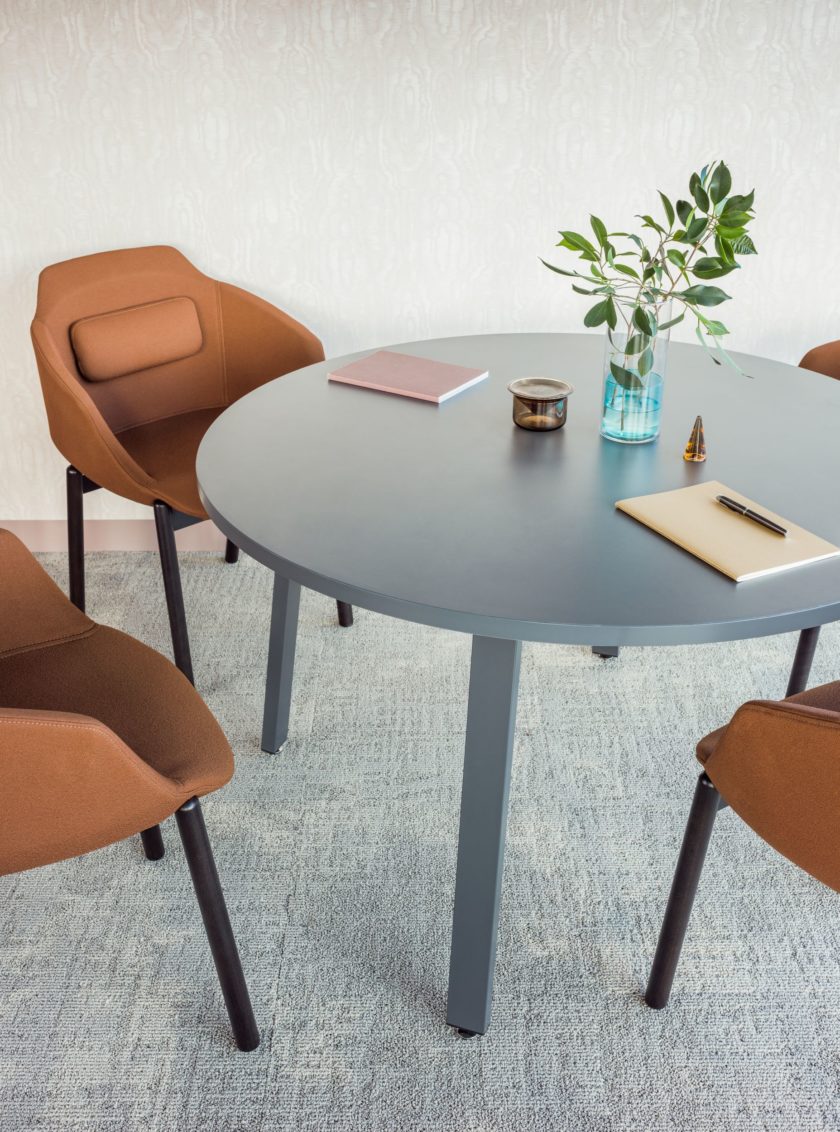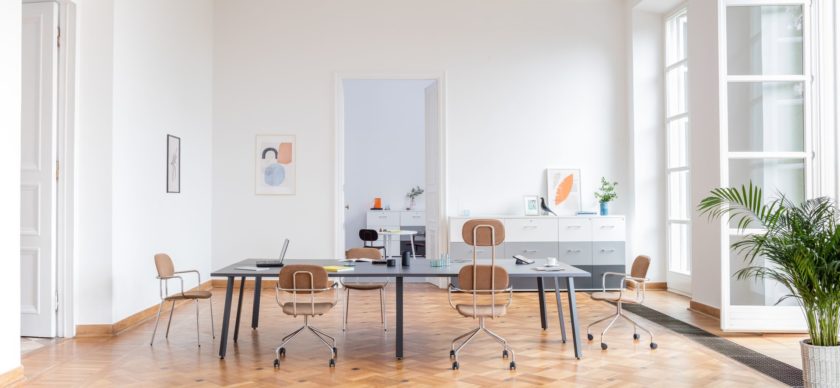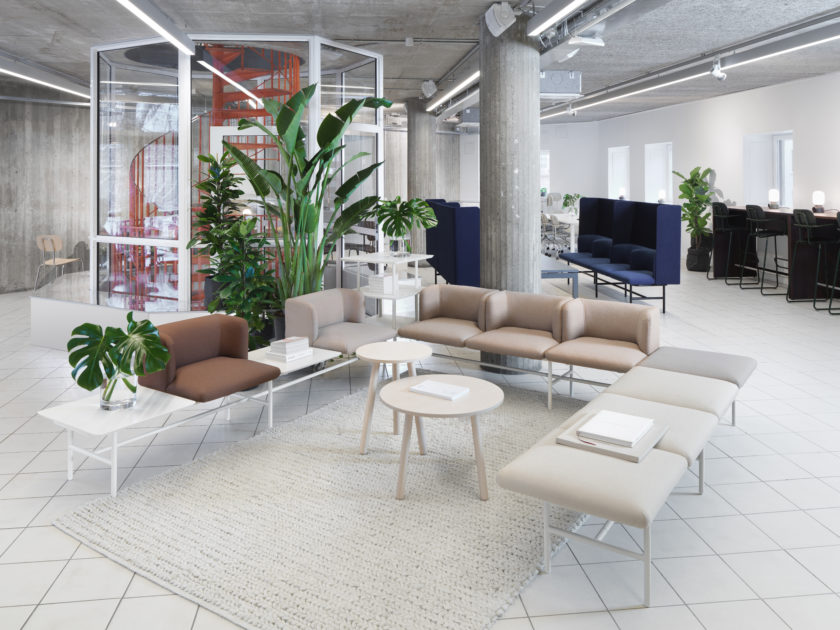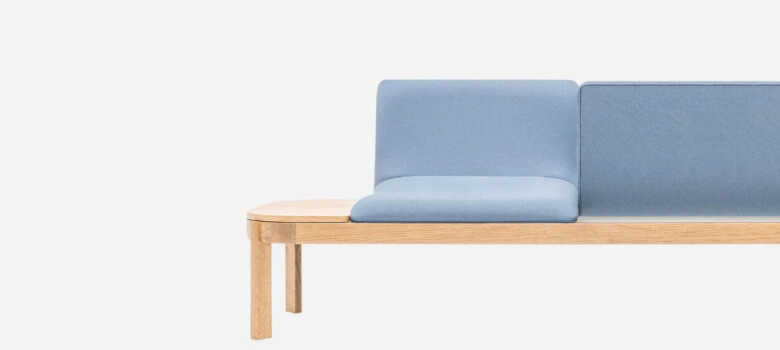In recent years brown paper and cardboard boxes were associated with the cheapest form of packaging. However, at present they are used by shops and producers who want to underline their connection with nature.

Even though wood and earth colours are at the top of ‘the least liked colours’ list they are very popular in interior design. It’s a neutral colour and although its characterised by a range of hues it remains bland and unnoticed. It has to be matched with other elements of design; together they give the space an array of possible solutions.

Brown is often associated with history and tradition. Similar to black, it’s a colour that indicates prestige and authority, however, its warmer and more positive. It creates a sense of security and cosiness, dark brown furniture fits well into directors’ and legal offices as well as reception areas of those who value credibility. It’s a colour favoured by people who work hard and value order.
In an office design pale browns and beiges take the centre stage. They introduce light and freshness, perfectly compliment Scandinavian and Biodiversity trends, which highlight tradition and authenticity of a place; they emphasise the quality of handicrafts and hand-made products.

The neutral look of brown makes it a base to many arrangements. Designs with deep shades of the colour are especially interesting. Its combination with red is traditionally used in Asia. Brown with various hues of orange and purple are striking and eye catching, while soft browns matched with whites and greens indicate ecology and organicity. It complements blue and brings in a contemporary look to a space.
Possibilities of matching brown with other hues are limitless. Large colour palette can act as a base of different combinations or dominate a space that refers to a more classic look.

